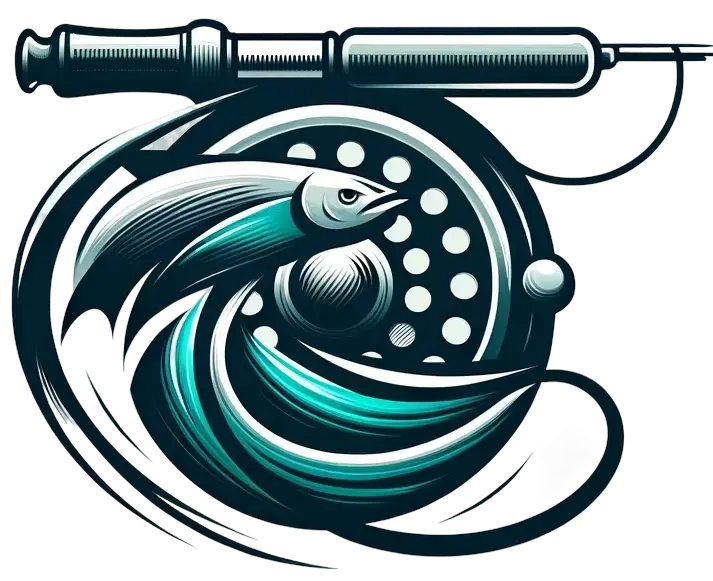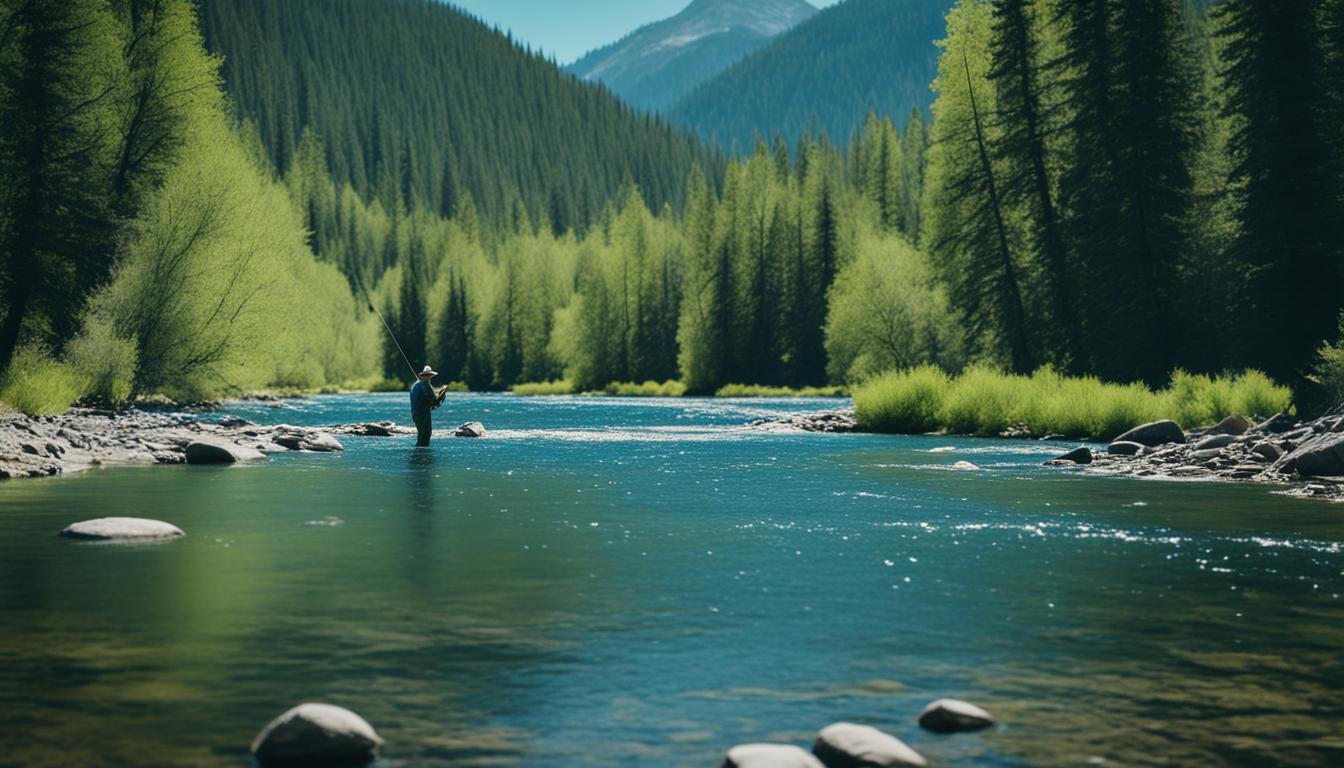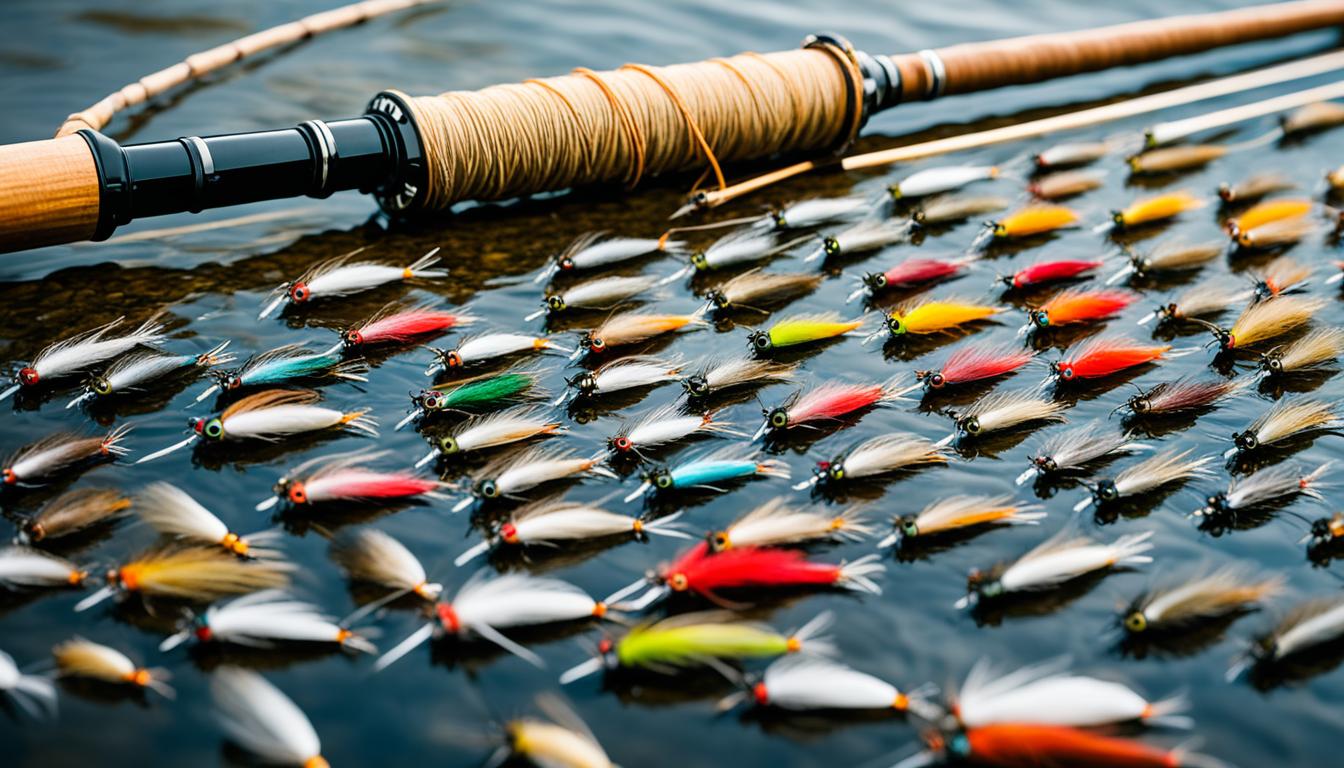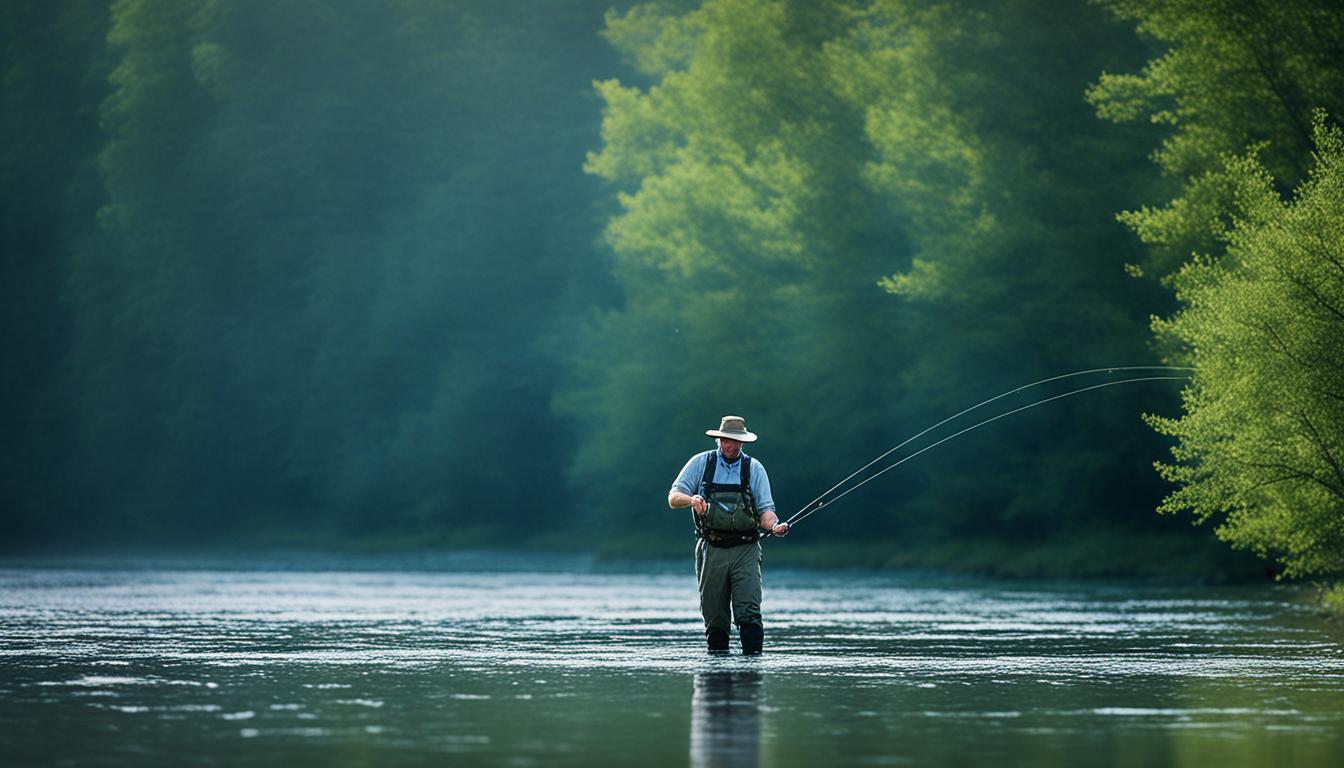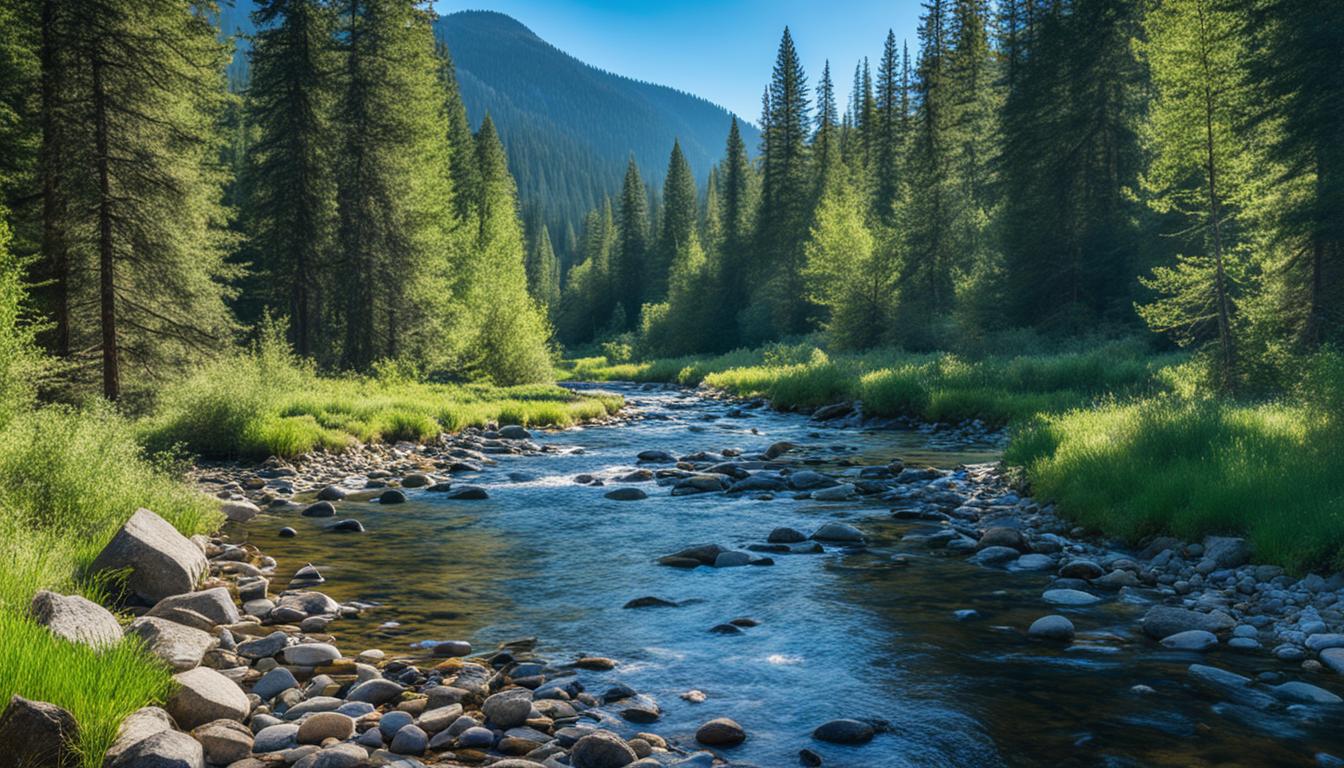Fishing the hatch can be a game-changer when it comes to fly fishing. Understanding the insects that trout are feeding on and using the right flies can greatly increase your chances of success on the water. In this guide, we’ll take you through the essential techniques and knowledge you need to effectively match the hatch.
Key Takeaways:
- Matching the hatch is a crucial skill for successful fly fishing.
- Choosing the right fly pattern that closely resembles the insects trout are feeding on is essential.
- Techniques such as observing the water, examining insects, and consulting experts can help in matching the hatch.
- In the Northeast, common hatches include sulphur mayflies, midges, blue-winged olives, and Quill Gordons.
- The Snake River offers diverse hatches throughout the year, including midges, stoneflies, and mayflies.
Understanding Matching the Hatch
Matching the hatch is a fundamental concept in fly fishing that can significantly impact your success on the water. It involves using flies that closely resemble the insects that trout are currently feeding on. Whether you’re using dry flies, nymphs, or streamers, choosing the right fly pattern is crucial.
To effectively match the hatch, it’s essential to take the time to understand the insect life in your local waters. This knowledge will inform your fly selection and improve your chances of enticing trout to bite. Observing the insects and their behavior can provide valuable insights into their size, shape, color, and movement characteristics, allowing you to choose the most accurate imitation.
When selecting flies, consider the stage of the insect’s life cycle that the trout are targeting. This could be the nymph stage when the insects are still underwater, or the adult stage when they emerge and take flight. By presenting a fly that mimics the specific stage, you increase the likelihood of triggering a feeding response from the trout.
Matching the hatch is like speaking the trout’s language. It’s about understanding what they’re eating and presenting them with the most convincing option.
Observation is a key skill when it comes to matching the hatch. Take the time to closely watch the water’s surface and surroundings during a hatch. Look for any signs of activity such as rising fish, flying insects, or fish feeding near the surface. By observing these cues, you can quickly identify the dominant insect species and adjust your fly selection accordingly.
Additionally, constantly experiment and refine your fly choice based on the trout’s response. If you’re not getting bites, try different patterns, sizes, and colors until you find the combination that triggers a positive reaction.
Remember, becoming proficient in matching the hatch takes practice and patience. It’s a skill that can greatly elevate your fly fishing experience and increase your chances of success on the water.
Techniques for Matching the Hatch
Matching the hatch is a skill that can greatly improve your chances of success in fly fishing. By choosing the right fly pattern that closely resembles the insects trout are feeding on, you are more likely to entice them to strike. Here are some effective techniques for matching the hatch:
1. Observing the Water and Insects
One popular method is to visit the water during a hatch and take the time to observe the insects in their natural habitat. Watch for their behavior, size, and color. This will help you determine which fly pattern to choose. By understanding the insect’s life cycle and its behavior on the water’s surface, you can select the most appropriate fly that mimics its appearance and movement.
2. Looking Under Stones and Logs
Another technique is to carefully lift stones or logs in the water to reveal the nymphs or larvae hiding beneath. Closely examine these insects and compare them to the flies in your fly box. By finding a close match, you can increase your chances of fooling the trout. Pay attention to the size, shape, and color of the nymphs, as these are important characteristics to replicate with your fly selection.
3. Using a Seine Net or Stomach Pump
If you want to identify the insects that fish are actively feeding on, using a seine net or a stomach pump can be helpful. A seine net is a fine mesh net that you can sweep through the water to collect insects. With a stomach pump, you can gently extract the stomach contents of a captured trout and examine it for insect remnants. These techniques provide direct evidence of the insects’ presence and can guide your fly selection.
4. Consulting Experts and Hatch Charts
Seeking advice from experts at a local fly shop can be invaluable in matching the hatch. These professionals often have extensive knowledge of the insects in the area and can recommend specific fly patterns and sizes. Additionally, studying hatch charts, which provide information about the timing and duration of different hatches, can give you insights into the insect life in your region.
By utilizing these techniques, you can enhance your ability to match the hatch and increase your chances of success on the water.
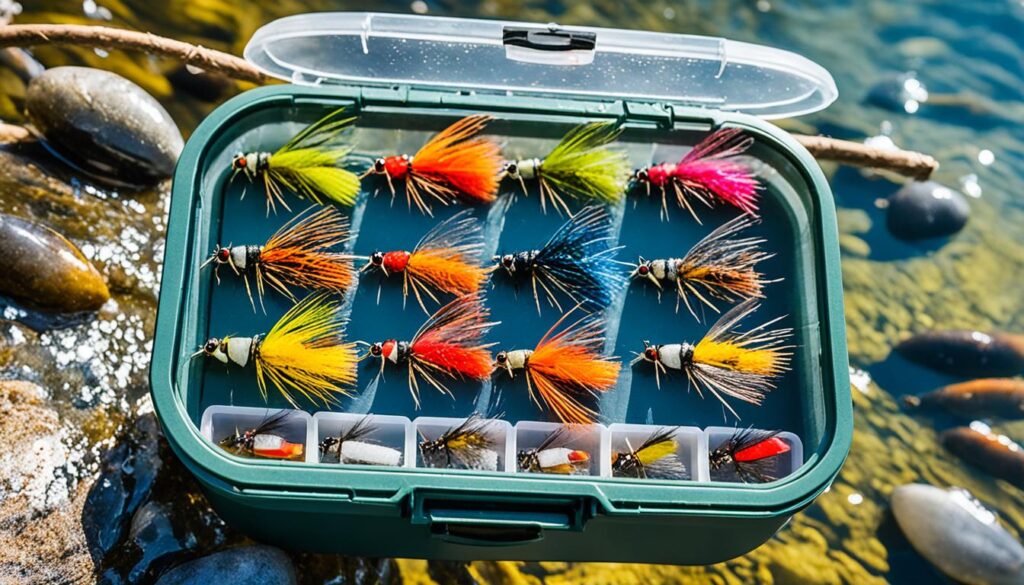
Common Insects and Matching Flies in the Northeast
The Northeast United States is home to abundant hatches and thriving fish populations. As fly anglers, it’s crucial to understand the common insects and matching flies to maximize our success on the water.
Some of the most prevalent hatches in the Northeast include:
- Sulphur Mayflies
- Midges
- Blue-winged Olives
- Quill Gordons
Each hatch requires specific fly patterns to effectively imitate the insects. Depending on the hatch, dry flies or nymphs can be highly productive choices. It’s essential to have a variety of fly patterns in different sizes to adapt to the insects throughout the fishing season.
Here’s a table highlighting the common insects and recommended fly patterns for each hatch:
| Hatch | Recommended Flies |
|---|---|
| Sulphur Mayflies | Sulphur Dry Flies, Sulphur Nymphs |
| Midges | Midge Dry Flies, Midge Nymphs |
| Blue-winged Olives | BWO Dry Flies, BWO Nymphs |
| Quill Gordons | Quill Gordon Dry Flies, Quill Gordon Nymphs |
By utilizing these recommended fly patterns, we can imitate the common insects found in the Northeast and increase our chances of enticing trout to bite.
As passionate anglers, let’s continue exploring the unique hatches and hatch patterns within our local waters to enhance our fly fishing experience.
Fly Fishing Hatches on the Snake River
The Snake River is a renowned fly fishing destination with a diverse population of trout. Whether you’re a seasoned angler or a novice, the Snake River offers exciting opportunities to test your skills and reel in some impressive catches. Throughout the year, this majestic river experiences a variety of hatches that present both challenges and opportunities for fly fishing enthusiasts.
Among the most notable hatches on the Snake River are midges, Black Winter Stone, Skwala, caddisflies, stoneflies, and mayflies. These hatches occur at different times of the year, and understanding their timing and characteristics is key to maximizing your success on the water.
Hatch Timing and Characteristics
Each hatch on the Snake River has its own unique timing and characteristics, which influence the behavior of both the trout and the insects themselves. By acquiring knowledge about these hatches, you can make informed decisions regarding the best flies and techniques to use.
“Understanding the timing and characteristics of hatches on the Snake River is crucial for any angler looking to increase their chances of success. Being able to identify the specific insects that the trout are feeding on during a hatch can significantly improve your catch rate.”
For example, midges are small, aquatic insects that emerge year-round, making them a staple food source for trout on the Snake River. They are especially active during the winter months when other hatches are less prevalent. Matching midge imitations can yield excellent results during this time.
Caddisflies, on the other hand, are active throughout the summer months and are known for their erratic flight patterns. These insects provide exciting dry fly opportunities as they flutter and skate across the water’s surface.
Stoneflies are larger and more robust insects, often found near rocky areas along the river. Their emergence typically occurs in the spring and early summer, and they are a favorite food source for hungry trout. Fishing with stonefly nymphs or adult imitations can be highly productive during this hatch.
Mayflies are another significant hatch on the Snake River. They are known for their delicate appearance and trout tend to key in on them when they are emerging from the water’s surface. Capturing the nuances of these hatches with the right flies and techniques can yield memorable fishing experiences.
Snake River Hatch Guide
To ensure that you are fully prepared for the hatches on the Snake River, refer to the table below for a comprehensive guide on the timing and key characteristics of each hatch:
| Hatch | Timing | Characteristics |
|---|---|---|
| Midges | Year-round, more active during winter | Small size, slow movements |
| Black Winter Stone | Late winter to early spring | Large, dark-colored stones |
| Skwala | Early spring | Olive-colored, skittering behavior |
| Caddisflies | Summer months | Erratic flight patterns, fluttering |
| Stoneflies | Spring and early summer | Large, found near rocky areas |
| Mayflies | Spring and summer | Delicate appearance, emerging from the water |
Remember, successful fly fishing on the Snake River requires a deep understanding of the hatches and the ability to adapt your tactics accordingly. By studying the timing and behavior of these hatches, you can increase your chances of hooking into some trophy-sized trout.
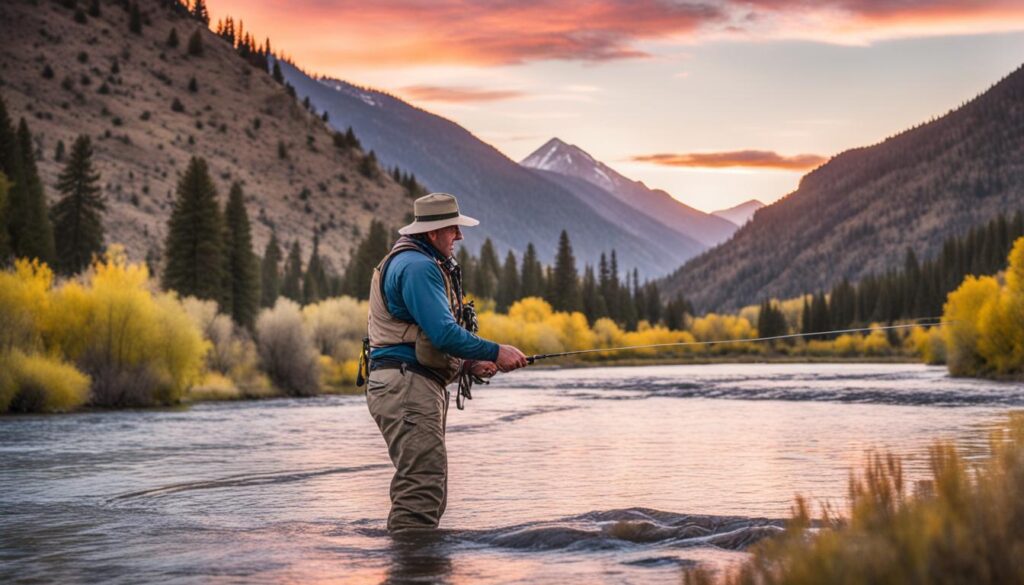
Conclusion
Fishing the hatch is an essential skill for fly anglers who want to increase their success on the water. Understanding the insects that trout are feeding on is the first step in effectively matching the hatch. By studying insect life and hatch patterns, we can identify the right fly patterns that closely resemble the natural insects, increasing our chances of fooling the fish.
Observation is key when it comes to fly fishing. Taking the time to observe the water and the behavior of the fish during a hatch can provide valuable insights into the insects they are targeting. By carefully selecting our flies and presenting them in a realistic manner, we can entice even the most selective trout to strike.
Whether you find yourself fishing in the Northeast or exploring the renowned Snake River, the principles of matching the hatch apply. Knowing the specific insects and hatch patterns in your region, such as the midges, caddisflies, and mayflies on the Snake River, will give you an edge. The more you understand the insects and the hatches, the more successful your fly fishing experiences will be.
FAQ
What does matching the hatch mean in fly fishing?
Matching the hatch refers to using flies that closely resemble the insects that trout are currently feeding on.
Why is matching the hatch important?
Choosing the right fly pattern can greatly increase your chances of catching fish, and understanding insect life is essential for becoming a better angler.
What are some techniques for matching the hatch?
Techniques include looking under stones or logs in the water to find nymphs, observing insects during a hatch, using a seine net or stomach pump, and consulting hatch charts or experts at a fly shop.
What are the common hatches and matching fly patterns in the Northeast?
Common hatches in the Northeast include sulphur mayflies, midges, blue-winged olives, and Quill Gordons. Different fly patterns, such as dry flies and nymphs, are effective for each hatch.
What are the fly fishing hatches on the Snake River?
The Snake River experiences various hatches throughout the year, including midges, Black Winter Stone, Skwala, caddisflies, stoneflies, and mayflies. Each hatch presents its own challenges and opportunities for anglers.
How can matching the hatch enhance my fly fishing experience?
By understanding the insects trout are feeding on, using the right fly patterns, and observing the water, you can greatly improve your chances of catching fish and increase your overall success on the water.
